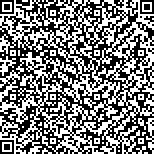樊留博,沈佳雯,韩文胜,等.超声定量评估技术在脑卒中后咽期吞咽障碍严重程度评价中的应用价值[J].中华物理医学与康复杂志,2024,46(7):613-617
扫码阅读全文

|
| 超声定量评估技术在脑卒中后咽期吞咽障碍严重程度评价中的应用价值 |
|
| |
| DOI:10.3760/cma.j.issn.0254-1424.2024.07.006 |
| 中文关键词: 超声 脑卒中 吞咽障碍 评估 颏舌骨肌 舌骨 |
| 英文关键词: Ultrasound Stroke Dysphagia Evaluation Geniohyoid muscle Hyoid bone |
| 基金项目:浙江省自然科学基金项目(LSY19H170001);浙江省医药卫生科技计划项目(2022KY434);浙江省医药卫生科技计划项目(2024KY524) |
|
| 摘要点击次数: 3046 |
| 全文下载次数: 4096 |
| 中文摘要: |
| 目的 探讨超声定量评估技术在脑卒中后咽期吞咽障碍评估中的应用价值。 方法 选取脑卒中后吞咽障碍患者30例为患者组,另选取同期30例健康体检者为健康组。2组受试者均接受咽部超声检查,测量或计算其舌骨至下颌骨间的最大距离、最小距离、所需时间,计算舌骨活动度、距离缩短率、颏舌骨肌活动度、活动时间、活动速度,比较2组间各项指标的差异。应用Spearman秩相关分析法分析超声检测各项指标与其VFSS评分的相关性,并绘制上述各项指标的特征曲线(ROC曲线),用于评价舌骨和颏舌骨肌活动参数对脑卒中后咽期吞咽障碍严重程度的评估价值。 结果 患者组的颏舌骨肌活动度、活动时间、活动速度分别为(6.15±1.66)mm、(0.26±0.07)s和(25.52±9.68)mm/s,与健康组比较,差异均有统计学意义(P<0.05);患者组下颌骨至舌骨活动度、活动时间、活动速度、距离缩短率与健康组比较,差异均有统计学意义(P<0.05)。脑卒中后吞咽障碍患者的VFSS等级与其颏舌骨肌活动度呈强相关,与颏舌骨肌活动速度呈中等相关,与舌骨活动时间呈弱相关。 结论 超声测量参数中的颏舌骨肌活动度、颏舌骨肌活动速度和舌骨活动时间可用于评估脑卒中后咽期吞咽功能障碍的严重程度,其中以颏舌骨肌活动度为最佳评估指标。 |
| 英文摘要: |
| Objective To investigate the clinical value of ultrasound in evaluating pharyngeal dysphagia after stroke. Methods Thirty stroke survivors with dysphagia formed the patient group, and 30 healthy persons formed the healthy group. All received pharyngeal ultrasound examinations by the same sonographer. The maximum distance from the hyoid bone to the mandible, the minimum distance, and the required time were measured or calculated. The hyoid bone′s motion, distance shortening rate, geniohyoid muscle activity, activity time, and activity speed were calculated. The differences in each value were compared, and the values were correlated with the videofluoroscopic swallowing study (VFSS) score using Spearman rank correlation. Receiver operating characteristics curves (ROC curves) were used to evaluate the value of hyoid bone and geniohyoid muscle activity for evaluating the severity of pharyngeal swallowing disorders after a stroke. Results The average range of activity, activity time, and activity speed of the geniohyoid muscle in the patient group were all significantly different from the healthy group′s averages. The hyoid bone′s range of activity, activity time, activity speed, and the rate of shortening of its distance from the mandible were also significantly different, on average. The patients′ VFSS grades correlated strongly with the activity of the geniohyoid muscle, moderately with the geniohyoid muscle′s speed, and weakly with the duration of hyoid bone activity. Conclusion The speed of geniohyoid muscle activity and hyoid bone activity time can be used to evaluate the severity of pharyngeal swallowing dysfunction after a stroke. Geniohyoid muscle activity is the best indicator. |
|
查看全文
查看/发表评论 下载PDF阅读器 |
| 关闭 |
|
|
|